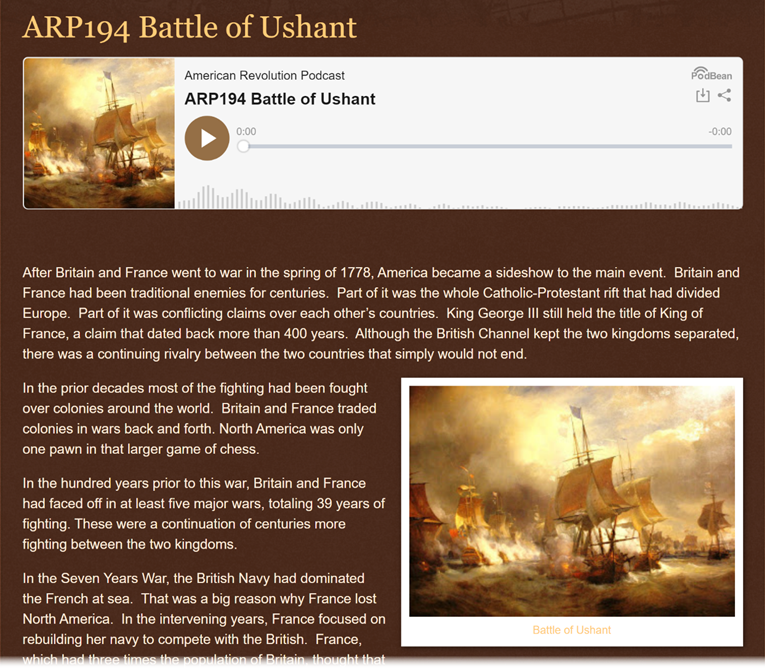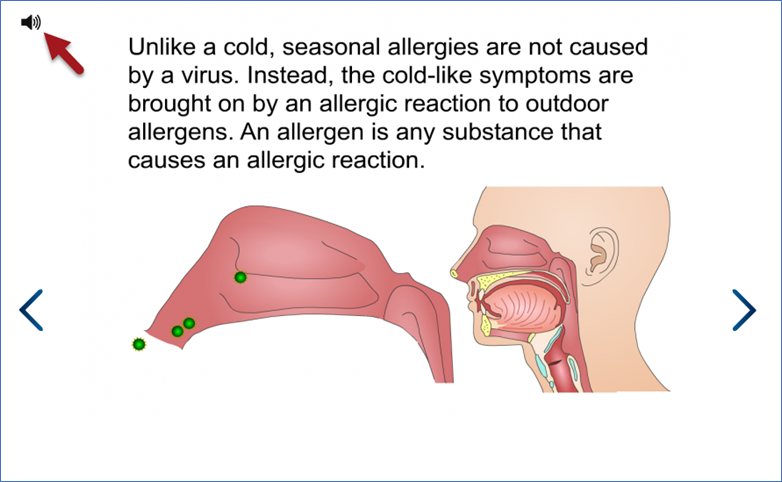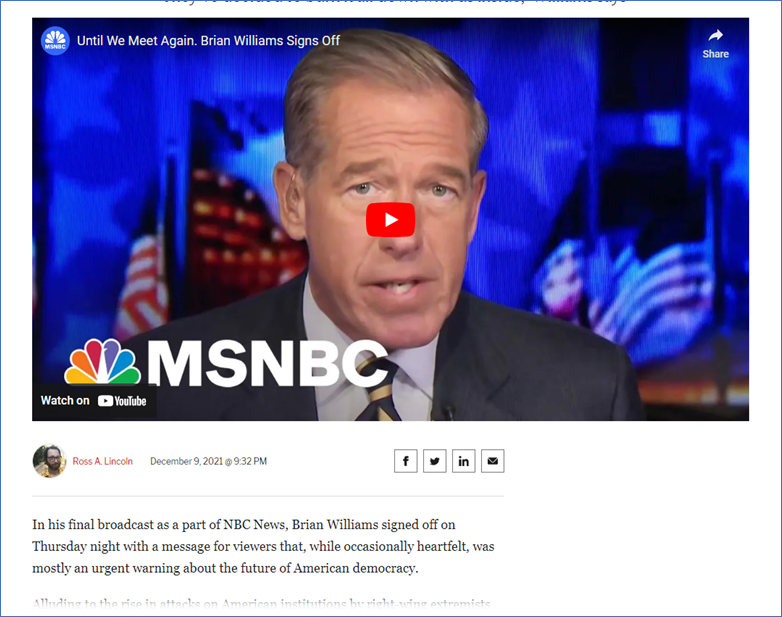WCAG terms often come in pairs
There are several places in Web Content Accessibility Guidelines (WCAG) where two terms are commonly used together–label/name, contrast/color, change of context/content, and bounding box/perimeter are examples. While these pairs may share some properties, understanding the differences between the terms in each pair is essential to understanding the requirements of success criteria in which they are used.
One pair of terms appears in several WCAG requirements for media: “alternative for time-based media” and “media alternative for text”.
“Alternative for Time-based Media”
Consider a webpage that contains audio controls to play a podcast, followed by a text transcript of that audio. Because the podcast media is audio-only, WCAG Success Criterion 1.2.1 Audio-only and Video-only (Prerecorded) requires that an “alternative for time-based media” be provided.

Source: American Revolution Podcast
The definition of alternative for time-based media in WCAG is: “document including correctly sequenced text descriptions of time-based visual and auditory information and providing a means for achieving the outcomes of any time-based interaction.” For a podcast with one speaker and no other important audio information, a transcript of the spoken text would meet this definition. If there are multiple speakers, the speaker change would need to be conveyed. So would other important audio information like laughter and sound effects, if present.
If additional information like images or links are added to the transcript, it is still considered an acceptable alternative. Notice that the definition states “document including correctly sequenced text descriptions” and not “document of correctly sequenced text descriptions” (emphasis added).
Because the media is audio-only, there is no need for captions–or anything else–to meet WCAG requirements.
“Media Alternative for Text”
WCAG 1.2.1, 1.2.2, and 1.2.3, which cover alternatives for prerecorded media, all have exceptions “when the media is a media alternative for text and is clearly labeled as such.”
The definition of media alternative for text is: “media that presents no more information than is already presented in text (directly or via text alternatives)”
A key part of this definition is “no more information.” For example, a page contains a block of text and a diagram with alternative text. Pressing a nearby button will play an audio narration of the text and alternative text.

Source: X-Plain Patient Education
Because this audio narration presents “no more information” than what is presented in the text and alternative text, it meets the definition of a media alternative for text. There is no need for an alternative to the audio because the page content is the alternative.
“Clearly labeled as such”
The second part of this requirement is that the media alternative for text is “clearly labeled as such.” In the above example, the icon to play audio clearly conveys that this is a media alternative (labels do not need to be text). This is not always the case.
Consider a news website with thousands of pages that start with a video. The video is typically followed by text about the story. On one page, the news story is a person speaking to the camera and nothing more.

Source: The Wrap
After several paragraphs summarizing the story comes the text “Read his full final remarks below:”, followed by the transcript.

Answering the following questions will help us determine if the requirements are met:
- Is the transcript an alternative for time-based media? Yes
- Is the video a media alternative for text? Yes
- Would the video still need to be captioned? This is a tough call. Is the text “Read his full final remarks below”–located several paragraphs after the video–a clear label of a that the video “presents no more information than is already presented in text?” Probably not. This means the video would still need to be captioned.
This exception could be met by providing a clear label like “Full transcript below” near the video, but even then, captions are still a good idea. With synchronized captions and a full transcript, everyone can choose their most accessible experience.
Recap
- An alternative for time-based media is a text-based (but not necessarily text-only) document that presents an alternative to audio, video, or multimedia.
-
- It is an appropriate alternative for audio-only content–captions are not necessary.
- A media alternative for text presents media that contains “no more information” than the text content.
-
- It can be audio, video, or both.
- In WCAG, prerecorded media has an exception for clearly-labeled media alternative for text.
-
- But you still may want to caption multimedia.
